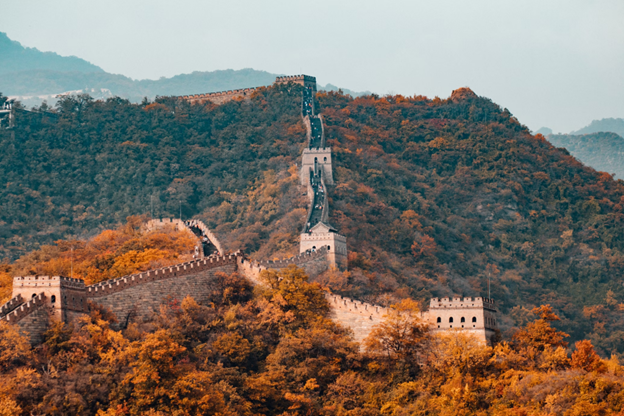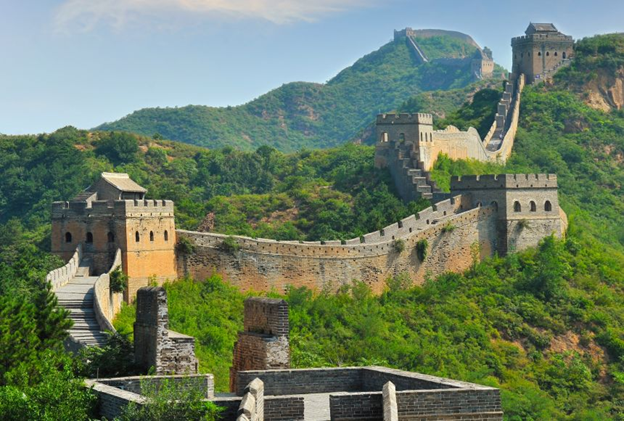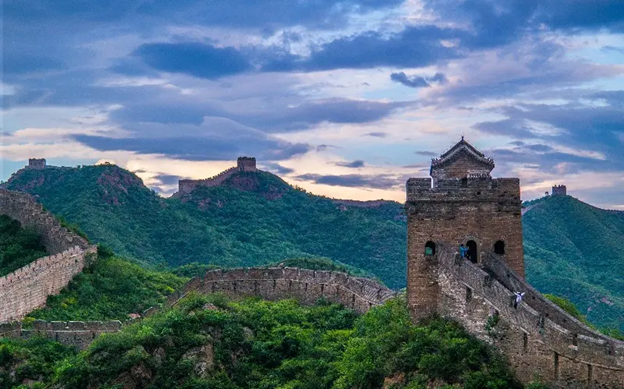THE GREAT WALL OF CHINA

The Great Wall of China is one of the most iconic structures in the world. Spanning over 13,000 miles across the northern part of China, the Great Wall is a testament to the ingenuity and perseverance of the Chinese people. Built over centuries, the wall served as a symbol of China’s strength and as a barrier against invaders. Today, the Great Wall is one of China’s most popular tourist attractions and a UNESCO World Heritage site.
HISTORY

The history of the Great Wall dates back more than 2,000 years to the Warring States period (476-221 BC) when various states in China began building walls to defend themselves against one another. However, it wasn’t until the Ming Dynasty (1368-1644) that the Great Wall as we know it today began to take shape. During this time, the Ming Dynasty expanded and reinforced many of the existing walls and built new ones to protect against the Mongol and Manchu invasions.
The Great Wall is made up of many different sections, each with its own unique history and characteristics. Some sections are well-preserved and easily accessible to tourists, while others are more remote and difficult to reach.
One of the most popular sections is the Badaling Great Wall, located just outside of Beijing. This section was one of the first to be restored and opened to tourists in the 1950s and has since become one of China’s top tourist attractions.
One of the most fascinating aspects of the Great Wall is the technology and engineering that went into its construction. The wall was built using a variety of materials, including bricks, tamped earth, and stone. To transport these materials, the Chinese developed a sophisticated system of pulleys and cranes, which allowed them to move heavy loads over long distances.
The Great Wall was also built with many different defensive features, including watchtowers, battlements, and arrow slits. These features allowed soldiers to defend against attackers from both inside and outside the wall. The wall also had defensive barriers, such as moats and traps, which were designed to slow down and deter invaders.
Despite its impressive size and complexity, the Great Wall was not always successful in keeping out invaders. Throughout its history, the wall was breached many times by various invading forces. However, the wall did serve as a powerful symbol of China’s strength and as a deterrent to potential invaders.
BEST TIME TO VISIT?
The Great Wall of China can be visited throughout the year, but it is recommended to plan a trip during spring or autumn months, especially in April, May, September, and November.
Summer

Due to school vacations and other reasons, summer is the peak season for tourists to visit the area. However, visiting during this time can be challenging due to the high influx of tourists, soaring temperatures in July and August, and increased probability of rainfall. Nonetheless, the lush green views can be enjoyed during this time.
This is because the weather is pleasant and the crowds are comparatively smaller. It is advisable to avoid visiting during weekends and Chinese public holidays to have a better experience.
AUTUMN

During autumn, the Great Wall experiences a surge in tourist activity, particularly among Chinese visitors who have time off from school and work. However, amidst the bustling crowds, one can still appreciate the stunning foliage and colorful scenery that adorn the walls, while enjoying the pleasant weather and clear skies. By strategically choosing the right location on the wall, it is possible to catch breathtaking sights without having to contend with the crowds.



